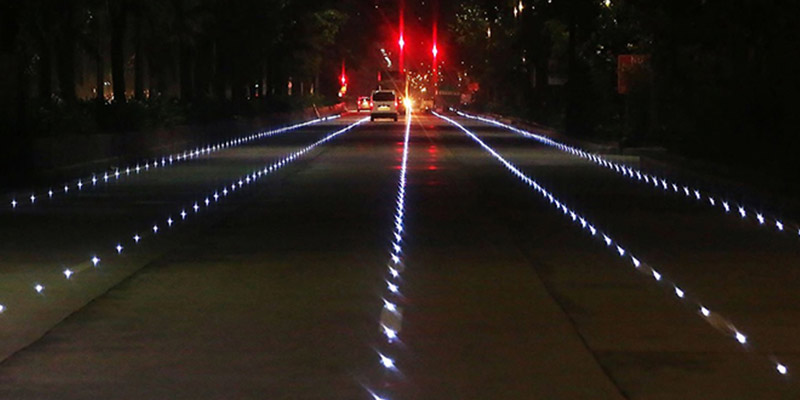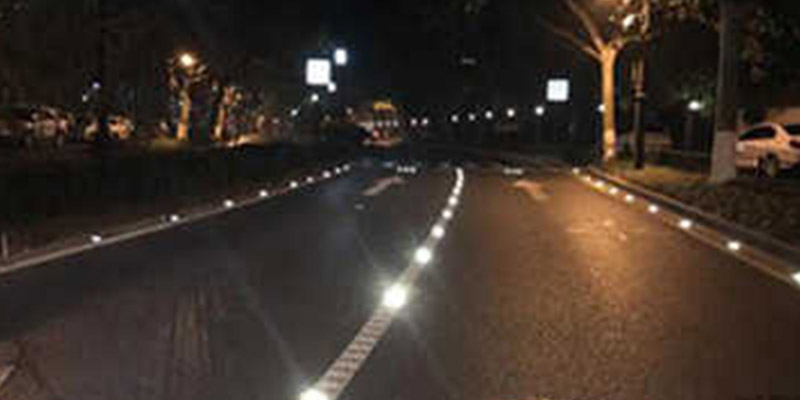In Africa, extreme temperatures reaching 57.8°C (recorded in Aqeziya, Libya), intense ultraviolet radiation from the Sahara Desert, and significant diurnal temperature variations—where some regions experience scorching days followed by sudden nighttime cooling—can cause standard solar road stud lights to develop issues within three months. These problems include battery swelling, casing cracks, and diminished LED brightness. To select durable solar road stud lights for African highways, communities, or scenic area projects, focus on three core requirements: high-temperature resistance, UV protection, and climate adaptation—while avoiding common selection pitfalls.
Africa's sustained daytime heat directly accelerates battery degradation. Standard lithium batteries see their lifespan plummet from 3 years to under 1 year in environments above 45°C. The following two battery types offer superior performance:
Lithium Iron Phosphate Batteries (LiFePO₄): With a temperature tolerance range of -20°C to +70°C, they fully cover the high temperatures across most of Africa. Their cycle life exceeds 2,000 cycles, ensuring 5-8 years of reliable operation under normal use. For instance, in a highway project in Johannesburg, South Africa, solar road stud lights using this battery type still functioned at over 80% capacity after five years.
High-Temperature Modified Nickel-Metal Hydride Batteries (Ni-MH): Though slightly shorter in lifespan (3-5 years), they cost 30% less than LiFePO₄ batteries, making them suitable for budget-constrained projects. Ensure selection of “high-temperature stable variants” to avoid leakage issues common in standard Ni-MH batteries above 50°C.
Avoid pitfalls: Reject products labeled “universal batteries” without specific temperature ratings. Before purchasing, require suppliers to provide third-party high-temperature test reports (e.g., performance data after 72 hours of continuous operation at 60°C).
Africa's intense ultraviolet radiation (annual UV Index often exceeds 10+, far surpassing temperate regions) causes inferior plastic enclosures to become brittle and crack within one year. Simultaneously, road projects must withstand truck rolling. Material selection must meet two criteria:
Main body material: “Cast Aluminum + PC Coating”: Cast aluminum housing withstands temperatures above 60°C without deformation and delivers over 30 tons of pressure resistance (suitable for Africa's common heavy-duty trucks). Surface coated with “UV-resistant PC layer” (≥1.2mm thick) to resist UV aging, preventing housing discoloration and cracking. For example, the HA-RS-A10N model, constructed with cast aluminum + UV PC material, has shown no significant aging after 3 years of use on a highway in Nairobi, Kenya.
Reject pure plastic enclosures: Standard ABS plastic softens under African heat, with a crush resistance below 15 tons, making it prone to crushing by vehicles. It is not recommended for main roads or parking lot projects.

While Africa's climate is predominantly dry and hot, regions like the Gulf of Guinea coast in West Africa experience sudden downpours and high dust levels. Inadequate waterproofing and dust resistance can damage internal components:
IP68 rating is mandatory: IP68 signifies complete dustproofing and the ability to withstand submersion in 1.5 meters of water for 30 minutes without leakage. This ensures protection against heavy rain and prevents sand/dust ingress that could clog solar panels.
Additionally verify “sealed connectors”: The junction between the solar panel and housing must use “high-temperature resistant silicone seals” (not standard rubber). Ordinary rubber hardens and fails under heat, allowing rainwater infiltration.
Africa boasts intense sunlight, but high temperatures reduce solar panel charging efficiency. Prioritize these two factors during selection:
Prefer monocrystalline silicon panels: Monocrystalline panels maintain 15%-20% higher charging efficiency than polycrystalline panels at 50°C (122°F) and offer superior weather resistance, ideal for Africa's prolonged exposure to intense sunlight. Opt for specifications of “2.5V/0.3W” or higher to ensure 4 hours of daily sunlight meets the 12-hour nighttime flashing requirement.
Apply “Anti-Reflective (AR) Coating”: AR coating reduces sunlight reflection, boosting light absorption efficiency by 30%. This is particularly crucial in high-intensity areas like the Sahara Desert, preventing insufficient charging due to reflection.
Many African roads lack streetlights, feature numerous curves, and experience frequent wildlife crossings. Solar road stud lights must align with practical needs:
Brightness controlled at “5-15 lumens”: Excessive brightness (over 20 lumens) causes glare at night, impairing driver vision; insufficient brightness (below 5 lumens) fails to penetrate dust and sand. Models with adjustable brightness are recommended for adaptation based on road type (main roads/community roads).
Lighting mode: “Slow flashing + constant-on dual mode”: Use “constant-on mode” on straight sections to outline road contours. Employ “slow flashing mode” (frequency 1-2 times/second) on curves, near schools, or in wildlife zones to alert drivers to slow down and reduce accident risks.

Some African countries enforce import standards, and delayed after-sales response can increase maintenance costs. Consider the following during selection:
Prioritize products with “CE or SONCAP certification”: CE certification is suitable for French-speaking Africa (e.g., Côte d'Ivoire, Cameroon), while SONCAP certification is mandatory in English-speaking regions like Nigeria. This prevents cargo detention due to incomplete certifications.
Require “3+ years warranty + local service points”: Core components (batteries, LEDs) have extended lifespans, so a 3-year warranty covers major failure periods. Suppliers with African service hubs (e.g., Johannesburg, South Africa; Nairobi, Kenya) reduce repair times, preventing road warning failures due to lengthy spare part shipping.
| Selection Dimensions | Recommended Standards | Pitfall Avoidance Reminder |
| Battery Type | Lithium iron phosphate battery (-20℃~+70℃) | Reject no temperature resistance parameters “General lithium battery” |
| Shell material | cast aluminum + 1.2mmanti- UV PCLayer, compression ≥30ton | Do not choose pure ABSplastic housing |
| Waterproof grade | IP68+High temperature resistant silicone sealing ring | Check whether the interface seal is made of ordinary rubber |
| solar panels | single crystal silicon + ARcoating, 2.5V/0.3Wabove | Avoid low efficiency of polysilicon panels at high temperatures |
| Luminous Mode | Slow flash +Dual-mode constant brightness 5-15lumen | Unselect fixed brightness and too bright /Too dark model |
| Certification & after-sales |
CE/SONCAPCertification, 3Years warranty +Local after-sales | Reject products without certification and whose after-sales service relies solely on domestic delivery |